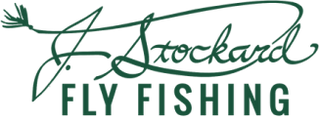by Matt O'Neal of Savage Flies: Find him on his YouTube channel at Savage Flies
Fall – the time of year when the terrestrials are still out on some waters, the morning air temperatures are getting a little cooler, and the trout are still hoping to fatten up before the winter doldrums get here for good. And one of the best times to break out your nymph box and fish your favorite sunken flies.
Over the last few seasons, this month’s pattern has become one of my go-to nymphs for fall trout here in the mid-Atlantic. There is no exciting history on this thing. Ray Bergman or Polly Rosborough didn’t fish it. It doesn’t have a catchy name. And I don’t claim this as one of my original patterns as it’s a conglomeration of enough other bead head, caddis pupa type nymphs that I would feel a bit guilty trying to convince anyone that I invented it.
As such, I’ve simply called this pattern what it is. A yellow, bead head, soft hackle caddis pupa. Now does it always imitate a caddis pupa? I doubt it. A mayfly nymph? Or a small stonefly? I don’t know. Maybe sometimes. What it does look like is a fuzzy insect, with the general profile of a bug that fish like to eat. I think that’s why it has worked for me.
Tying the Bead Head Yellow Soft Hackle Caddis Pupa

I do use two somewhat unique materials in this, but don’t skip this pattern because you don’t have emu feathers or camel dubbing. I first tied this with standard partridge for the collar hackle, and any non-spiky fur dubbing (think rabbit) will work perfectly for the body. But I would encourage you to check out camel as a dubbing material for your wet flies or nymphs. It’ll dub as easily as rabbit, but has a slightly different krinkly-ness. I know I just made up that word, but I think most fly tiers will understand what I’m trying to say.
And emu feathers? Definitely take a look at these. They are slightly more economical than partridge and have unique properties that no other feather can claim.
Two points worth mentioning if you tie this thing for some fall fishing-- keep the body yellow, or maybe a burnt-orangish, semi-yellow tone. And don’t substitute the peacock herl thorax. There is a reason peacock herl has been used in so many sunken flies over the years. It’s magical! Or magically delicious to the fish. Okay, that was an obscure reference to a breakfast cereal I grew up on. If you caught it, nice, we’re probably of the same generation. And besides, peacock herl - there is nothing else like it.
One last note, as tied, this has been a great fall nymph for me. But as with everything in fly tying, feel free to mix it up. Change the bead color, use red thread and make a hot spot. Change the body color and make it an attractor bug for panfish. There are no rules here. Just keep tying and keep having fun.
Bead Head Yellow Soft Hackle Caddis Pupa Recipe
Hook: #12-16 caddis pupa (or general curved shank)
Bead: 2.4 or 2.8 mm brass or tungsten
Thread: Black
Rib: Copper, size brassie
Body: Yellow camel, or any soft fur dubbing
Thorax: Peacock herl
Hackle: Emu (or partridge)


3 comments
Frank Hagerty
Thanks, Matt for this pattern. I taught it to the Project Healing Waters group this morning and it was a hit. I really like your idea of bending the end of the wire for the rib; it worked great and I’ll use that trick from now on.
Doc
This will definitely work on my freestone streams attracting cutties. I’ve used something similar, but I really like the looks of this version and will put them to good use soon. Thanks for the posting.
Anonymous
Cool! I’m going to demo a couple of these for our fly-tying groups next meeting